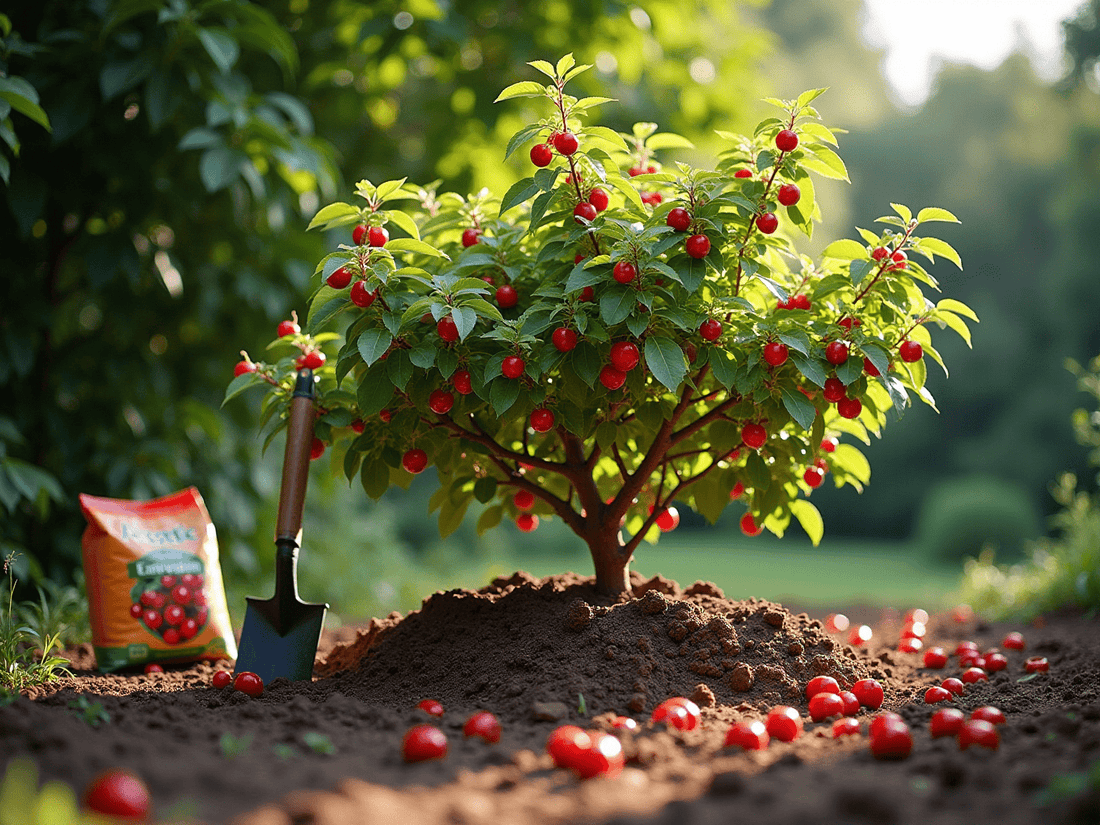
Acerola: Step-by-Step Guide to Planting and Caring for Trees
Share
Want to grow one of the healthiest fruits in your own backyard? The Acerola tree, also known as the Barbados cherry, produces vibrant red fruit that’s bursting with vitamin C—up to 100 times more than oranges. But like any tropical fruit tree, it needs the right care to thrive.
Imagine the joy of nurturing this evergreen, which thrives in warm climates and specific USDA hardiness zones. Its delightful tangy flavor can truly enhance your culinary creations. However, growing an Acerola tree successfully requires a thoughtful approach to its unique needs.
From selecting the perfect planting location to maintaining healthy soil and managing pests, each step is vital for ensuring a fruitful harvest. Have you ever faced challenges in your gardening journey? You're not alone. This article will explore essential practices for nurturing Acerola trees, providing valuable insights that cater to both novice and experienced gardeners alike. Together, we can embark on this rewarding gardening adventure.

Understand Acerola Tree Characteristics
Prepare the Ideal Planting Environment
- Choose the Right Location: It’s essential to select a spot that basks in 6 to 8 hours of direct sunlight each day. Look for an area that is sheltered from strong winds yet allows for good air circulation. You might even consider the proximity to other tropical fruit trees like soursop and passion fruit, as they thrive under similar conditions.
- Ground Preparation: Start by checking the pH of your soil, aiming for a range between 5.5 and 6.5. Levels above 6.5 can be too alkaline for optimal growth. Regular monitoring of soil pH allows you to take quick corrective actions. If adjustments are necessary, enrich your soil with organic matter like compost or well-rotted manure to improve drainage and nutrient levels. This is particularly beneficial for passion fruit vines, which flourish in well-drained, nutrient-rich soil. For guidance on measuring soil pH, be sure to watch our informative video presented by Emma.
- Excavating the Hole: Dig a hole that is twice the width and depth of the root ball. This ample space is vital for the roots to grow and settle, which is crucial for both cherry and soursop trees. Drainage considerations are important; if your soil tends to retain excess moisture, consider building raised beds or mounds to enhance drainage, as acerola plants are particularly sensitive to waterlogged conditions. This is equally important for soursop plants, which can struggle in overly moist environments. After planting, applying a layer of mulch around the base of the plant helps maintain moisture and suppress weed growth, creating a healthier environment for your fruit plant. Mulching also benefits passion vines by preserving moisture and temperature in the soil.
 Plant Acerola Trees: Step-by-Step Instructions
Plant Acerola Trees: Step-by-Step Instructions
- Prepare the acerola plant: Gently remove the plant from its container, ensuring minimal disturbance to its roots. If the roots are tightly bound, take a moment to loosen them gently—this small act can promote healthy growth.
- Ground Preparation: Before planting, till the earth in the planting area to integrate nutrients and reduce compaction. This step is crucial for encouraging better root growth, allowing your tree to thrive.
- Position the Tree: Center the tree in the planting hole, ensuring the top of the root ball is level with the surrounding earth surface. This positioning is vital for optimal growth, setting the stage for your plant's success.
- Backfill the Hole: Gradually fill the hole with the prepared earth, lightly tamping it down to eliminate air pockets. Be careful not to compact the ground too tightly, as this can restrict root expansion, which is essential for your tree's health.
- Water Thoroughly: After planting, provide deep watering to help settle the soil around the roots. Make sure the water reaches the root zone effectively—your tree will appreciate this nurturing touch.
- Add Mulch: Apply a 3-inch layer of mulch around the base of the plant, keeping it a few inches away from the trunk to prevent rot. Using the right kind of mulch and avoiding the 'mulch volcano' effect is crucial for retaining moisture and suppressing weeds, enhancing your plant's health.
- Staking (if necessary): In windy regions, consider staking the plant for additional support until it develops a strong root system. This precaution can prevent damage during those early growth stages, giving your tree the best chance to flourish.

Maintain and Care for Your Acerola Trees
- Watering: It’s important to keep the soil consistently moist, but not waterlogged, especially during the initial months after planting. Once your plants are established, water them thoroughly once a week, and increase the frequency during dry spells to encourage healthy growth.
- Fertilization: Consider using a balanced fertilizer specifically designed for bearing plants twice a year—once in early spring and again in late summer. This schedule can really promote robust growth and enhance your crop production. Notably, applying one pound of nitrogen per tree in late summer can help address any nutrient deficiencies. Just remember, over-fertilizing can lead to excessive leaf growth and unsatisfactory crop yields. Nutrients like potassium, calcium, and phosphate are essential for improving the flavor, size, and texture of your produce, as highlighted in a case study on fertilization's effect on quality.
- Pruning: Conducting annual trimming in late winter or early spring is a great way to remove any dead or damaged branches and shape the plant. This practice not only enhances air circulation but also allows better sunlight penetration, which is crucial for the development of your produce.
- Pest Control: Regularly check your plants for common pests like aphids and flies on your acerola. Using organic pest control methods, such as neem oil, can effectively manage infestations while protecting the beneficial insects in your garden.
- Harvesting: When it’s time to harvest, look for cherries that have reached full ripeness, indicated by their vibrant red color. Gently twist the fruit to separate it from the stem, being careful to avoid harming the plant in the process. As Robert Crassweller noted, applying some micronutrients in the fall can also be beneficial for overall plant health.
By adhering to these nurturing guidelines, you can guarantee the health and productivity of your acerola trees, resulting in a plentiful harvest of delicious fruit.
Conclusion
🌿 Ready to Grow a Vitamin C Powerhouse in Your Garden?
Growing an Acerola tree is more than planting—it’s cultivating health, joy, and flavor right at home. With guidance from Everglades Farm, you’ll enjoy a rich harvest and vibrant tropical greenery in no time.
🌳 Get your Acerola tree now and start your tropical gardening journey with confidence.


